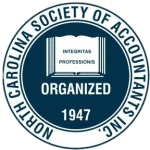
Source: Acquisition
Cincinnati, OH
“After all the grief, sweat and years of long hours . . . what can I get for it?”
There comes a time in the life cycle of every business when it becomes necessary, if not vital, to learn what the business is actually worth.
Why value a going business?
This “handle on value” may be needed for any number of reasons, but the following list covers at least some of the more popular ones:
- Contemplated sale of the business
- Mergers & acquisitions
- Adding or withdrawing partners or shareholders
- Buy-sell agreements
- ESOPs
- Estate and/or financial exit planning
- Insurance or other economic losses
- Re-capitalization of the business
- Arranging funding for expansion
- Marital dissolution (Divorce)
- Determination of loan value
- Purchase of business from family estate
To put it simply, when you own a business, the whole process of deciding “to add, to change, to buy or to sell,” best begins with a professional business valuation to determine the “real world”? market value of the business at a given point in time. And when the business has been valued properly, everybody wins. Let’s look at a representative example drawn from our experience with thousands of businesses we have worked with over the years.
Typical Buy-Sell Scenario
Considering a specific objective for a business valuation helps to understand the process. In this context we can assume that in the following scenario the goal is to sell the business. But within this notion to sell there must be one common thread that guides the way things work. And that is the fair treatment of the business being valued, and also of the ultimate buyer who finally acquires the business. The following hypothesis then, illustrates the details of the sale, both from the seller’s and buyer’s perspective. Here a professional business valuation was used as the basis to begin discussions once the qualified buyer had expressed a sincere interest in the business.
Business: Industrial distributor with products and services marketed within a 100 mile radius from its Midwest location. Present annual sales – $1,750,000. 25 year history, with a staff of 13 including the owner and two sales people.
Seller’s Rationale: This owner used the numbers generated by the valuation service as a basis for negotiation, wherein the final buy price agreed upon was an even $1,000,000. At the time of closing, the purchase price included assets in the amount of $340,000 consisting of inventory for the most part. Based upon the buy-sell agreement, the seller receives a total down payment of $400,000 in cash and marketable securities. The balance of $600,000 is to be carried as an owner financed loan at 10% interest over a payback period of 10 years. The real net profit of this business amounts to $225,000 per year, allowing the annual debt service of $95,160 ($7,930/Mo including principal and interest) to be handled without undue strain on cash flow. Thus our seller receives a fair price for the business, with the down payment to be used by the owner to support retirement plans and also to pay off a small business bank loan which is the only remaining debt in the business. In this case the owner also benefits in that the finance balance ($600,000) paid by the buyer, will be disbursed over the next 10 years, minimizing tax implications.
Buyer’s Rationale: With a background in the distribution business and having prepared a comprehensive business plan, the buyer is purchasing this business because the firm has a good, stable history, almost no people turnover, is priced right and has excellent growth potential. In the business plan the buyer has calculated a modest 9% growth rate to reach $4,000,000 in sales by the end of 10 years. Because of certain reinvestments that are necessary, the buyer anticipates that the current 12% net profit (pre-tax) will remain the same, even though positive cost savings will be instituted to lower overhead and improve margins. This will produce enough additional net profit beyond the present $225,000/year to retire the owner financed loan early, or to use for reinvestment, personal compensation or a combination thereof. Per the business plan, within 10 years or less, the business will reach the point where it is debt free and producing $500,000 annually in real net profit. Had the purchaser placed his $400,000 in the market and earned 10% interest per year, the investment would have grown to $1,037,496 (with compounding) in the same 10 year period. This compared to owning the above business on a debt free basis (including its inventory, equipment, vehicles and fixtures) at the end of the same 10 year period, and be producing $500,000/year in profit.
So in this scenario, the positive implications of the business valuation are abundant. The valuation has become the basis for the monetary buy-sell discussions which have proven equitable for both seller and buyer. Recognize, directmedicationsonline.com however, this is just a projection and is only used to implicitly illustrate that to be really meaningful and worthwhile, the valuation results must project fairness for all parties concerned.
Valuation Methods Now In Use
Here the approach to a given end is seemingly endless. On the one hand you have a group “know-all specialists in their niche”? that will use magic ratios to equate to business value. I can recall a discussion with an owner of a super market years ago who said he could place a value on any store operation by simply using the ratio of 7.5 x earnings. A quick response to this might be . . . “how and who defines earnings?”? Then on the other extreme we can respectfully mention that group of business appraisers that have completed course requirements offered by the two major valuation associations . . . . The Institute of Business Appraisers (IBA), Plantation, FL; and the American Society of Appraisers (ASA), Washington, DC. Both associations offer excellent programs and their graduates generally do a very thorough and detailed analysis of a given business to then produce its fair market value.
And somewhere in between the methodologies offered above, we have two other approaches that bear mention. First is the “financially based”? individual who may value one or two business per year and is a self proclaimed “expert.”? (Comment directed to the business owner . . . “since its your business, with whom will you feel comfortable enough to entrust with its confidential financial information to determine its real worth? The self proclaimed expert, or the experienced professional?”?) Second is the available variety of off-the-shelf software programs for those individuals (sellers, buyers or others) who delight in purchasing a CD for their computer or lap top and then spend the next 10 or 100 hours in learning and working the program. And when the exercise is finished and they have the final value “in hand”? . . . they may nervously hope an error hasn’t been made somewhere along the way. I can’t tell you how many times I have received a call from someone who purchased a software program because a buyer contacted them about acquiring their business, and now they were “scared to death”? with the software results, and their date to talk to the buyer was . . . “next week!”?
Revenue Ruling 59-60
In terms of specific methods to value a business, most methodologies now in place go back to the Internal Revenue Code of 1954, later updated to Revenue Ruling 59-60, to deal with the valuation of stocks of closely held corporations. This ruling specified a group of “relevant factors”? which were acceptable for consideration when placing a value on an operating business, or its share value in a closely held corporation. These factors included among others, the nature and history of the business, economic outlook, book value of the stock, financial condition, presence of goodwill and the market value of stocks of corporations engaged in a similar line of business. All good information – but sometimes difficult and expensive to acquire.
Since for the most part, valuation methodologies today have grown out of the ideas represented by RR 59-60, we can note the approaches most often used currently in assessing business value. They are labeled the Cost, Market and Income methods. In brief they can be defined as follows:
Cost Method – The business is valued based upon its cost of replacement.
Market Method – Here the valuation expert researches the sales price of similar publicly traded businesses for comparison purposes.
Income Method – In this case the value discipline involves the determination of future economic benefits as an expression of present business worth.
In an effort to be open to all “practitioners of valuation”? (including software programs), it would be fair to state that the methods in use today normally embrace elements of relative authenticity. Beyond that we must recognize that determining market value for a business is as much an “art”? as it is a science. In the final analysis, in the scenario where a business is to be sold, the ultimate valuator is the buyer whose skill, interest and judgment is reflected by the purchase price offered. We’ve all heard it before . . . “a business is worth what a willing and qualified buyer is willing to pay for it.”? ***
Part II Topics Include:
- Financial Data
- Present Debt – A Factor?
- What does a valuation cost?
- How to select a valuation service
- Aids to help sellers
Paul A. Halas, Jr., VA, CMC, has operated the firm of Halas & Associates in Charlotte, NC, since 1978. The Halas Business Valuation System (HBVS) has been used to value thousands of businesses nationally and internationally since its introduction in 1985.





